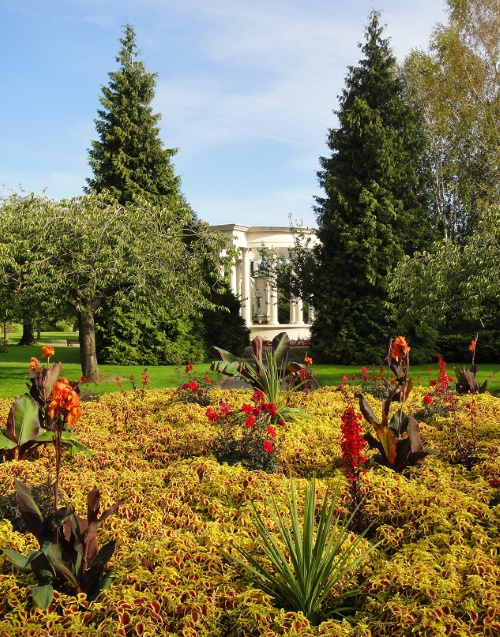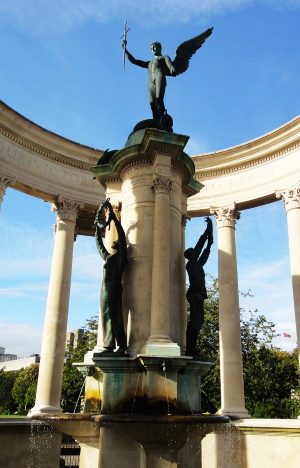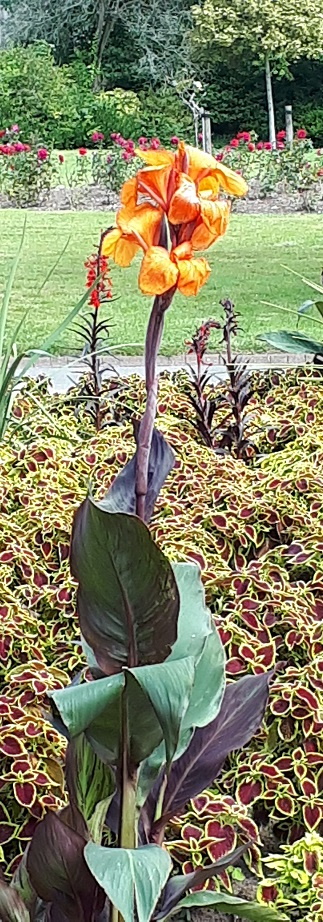 |
92. Benches
Sixty-five years ago, when barely more than a toddler, I stepped out of our apartment building and crossed the wide road that is Bronx Park East to play in the park. Sure, I was young, but parenting was different then, traffic was less, and children did not have their development stifled by anxious parents. Four years old and we were trusted to get safely across the wide street. One of the first things we learned was to look both ways. We were New Yorkers and it was the 1950s.
The park was behind stone masonry that held in place a wrought iron fence. There were benches along the sidewalk facing the street and the old folks, at least they certainly looked very old to a child, roosted there all day. There still lingers a trivial memory of seeing a large ant crawl up the fat leg of a heavy old woman, past where the nylon ended on her calf and continuing under the skirt of her dress. I said nothing because I didn’t know how to say it. She seemed entirely unaffected, but the memory disturbs me to this day.
Sixty-five years ago, I had not had the patience for benches. The old folks would stop me on my way to play. After the old folks interrogated me, perhaps taking some measure of my cuteness or looking for me to let slip something gossip-worthy about my parents, I would fly away through the nearby park entrance and lose myself in adventures, often with my best friend, Steve Sterner.
That park had been a whole world to me and I thought I had reached its edges. There were the tennis courts at the bottom. There was the ancient round balcony like a Roman ruin that could only be reached by passing through a deep forest. The balcony looked out over the Bronx River Parkway, where there was always traffic. What was for me the end of the park was a playground at the top of the hill. I discovered it late in life, age five, but that was where my courage gave out. I went no further from home on my own.
Many years later, when I returned on much longer legs, it was a disturbing discovery to realize how narrow and short the park was really and the forest wasn’t deep at all. I could walk the entire world of my childhood in minutes. Just beyond the playground at the edge of the world was a pedestrian bridge that would have carried me across the Bronx River Parkway into the vast wooded land of the New York Botanical Garden, 250 acres that I never knew about because we moved away when I was five.
Sixty-three years later and I am again living in an apartment. My two balconies look south over the hip roof of the Tabernacle Chapel and beyond I can see the grass covered roof of Cardiff’s new Central Library, just a decade old. The grass is supposed to be there.
Now I have the patience for benches. I have a favorite bench. It is in Alexandra Gardens, named for the wife of King Edward VII, Alexandra of Denmark. The Gardens are open twenty-four hours and I have visited at every hour of the day or night to ponder things. I was startled there when the fountain came on in the Welsh National War Memorial. It was a bit before seven o’clock in the morning and was immediately followed by the ringing of the hour bell in the City Hall clock tower, its gilded dial visible from the Gardens.

It is a tasteful war memorial remembering the servicemen who sacrificed their lives during the Great War. What is it that makes a place sacred? We assign sacredness. We accommodate it with structures and symbols. To not forget their significance, we maintain these sites. Cleaning and keeping nature from growing over everything serves as a way of honoring and meditating on the good deeds of others. We shouldn’t forget. We should model ourselves on them. However, there was bravery and heroes on both sides. No more so with the Welsh than with their opponents, but that is the way these memorials are done, remembering the dead warriors on one side.
I find it curious that soon to be wed couples come to the War Memorial to be photographed and filmed. I don’t think they know what it is, that they mistake it for a folly.

Inside a circular colonnade, a plinth raises a bronze angel and around its base are a soldier, a sailor, and a pilot. The Memorial is engraved in English and in Welsh. Throughout the Gardens are scattered smaller memorials for other wars in which Welshmen have died. Tucked away in a small wooded cul-de-sac there is a memorial for the Falklands War. But there are others. There is to be found a memorial for Raoul Gustaf Wallenberg and another dedicated to Organ Donors.
Alexandra Gardens occupy a block inside Cathays Park. It takes only fifteen minutes for me to reach it. The Gardens are enclosed inside a hedge and surrounded by monumental buildings: City Hall, the National Museum Wales, and the institutions of government and Cardiff University. They form a barrier that keeps away the bustle of humanity. At night I might be the only person in the park. During the day, I am heartened by the number of people found in the Gardens reading. I also enjoy the gardeners revising the ever-changing flowerbeds.
These days, I am the old folk sitting on a bench. In a recent essay, I described myself as the old man perched on a park bench willing to talk to anyone willing to talk to me. It is true, but more often the conversations are with birds; seagulls and pigeons to be sure, but sometimes a carrion crow and once a robin redbreast posted himself inches from my shoulder. Picking Alexandra Gardens as my perch with benches that do not face a street, I am usually isolated with my thoughts. It is there that I sometimes take out my carnet and begin essays.

![]()
Mr Bentzman will continue to report here regularly about
the events and concerns of his life. If you've any
comments or suggestions, he would be
pleased to hear from you.
You can find his
several books at www.Bentzman.com.
Enshrined
Inside Me, his second collection of
essays, is now available to purchase.
